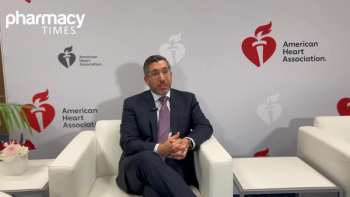
FDA Approves Isatuximab With Bortezomib, Lenalidomide, and Dexamethasone for NDMM
The decision expands treatment options for patients with transplant-ineligible newly diagnosed multiple myeloma (NDMM).
Isatuximab-irfc (Sarclisa; Sanofi) in combination with bortezomib (Velcade; Millennium/Takeda and Janssen Pharmaceutical Companies), lenalidomide (Revlimid; Bristol Myers Squibb), and dexamethasone (VRd) received FDA approval for patients with newly diagnosed multiple myeloma who are not eligible for autologous stem cell transplantation (ASCT). The decision is based on results from the phase 3 IMROZ trial (NCT03319667) which significantly reduced risk of disease progression and mortality.1
MM is the second most common hematological malignancy affecting over 130,000 individuals in the United States. However, promising advancements in treatment over the past decade have introduced immunotherapies as safe and efficacious treatments for patients with MM. Isatuximab is a monoclonal antibody that specifically targets and binds to CD38, a highly expressed protein found on the surface of myeloma cells. In recent years, it has shown significant improvements in minimal residual disease (MRD) negativity and PFS when used with the current SOC regimens, including VRd, across various studies. The IMROZ phase 3 clinical trial produced positive results, which led to the FDA granting isatuximab in combination with VRd priority review in May 2024, leading to its approval in September.2,3
IMROZ is an open-label, randomized, active-controlled phase 3 trial assessing a total of 446 patients with NDMM who were not eligible for ASCT who were randomized (3:2) to receive either isatuximab-irfc with VRd (Isa-VRd) or VRd alone. The primary end point was progression-free survival (PFS) as assessed by an independent review committee based on the International Myeloma Working Group criteria.4
At a median follow-up of 59.7 months, the data showed that patients who received Isa-VRd had a 40% reduction in the risk of disease progression compared with VRd alone (HR, 0.60; 95% CI, 0.44-0.81; P =.0009). Additionally, the estimated PFS at 60 months was 63.2% in the isa-VRd group, as compared with 45.2% in the VRd group (hazard ratio for disease progression or death, 0.60; 98.5% confidence interval, 0.41 to 0.88; P<.001). Patients in the isa-VRd group had a significantly higher complete response or better (74.7% vs. 64.1%, P=.01).3,4
The researchers observed that the median PFSwas not reached (NR; 95% CI, NR-NR) in the Isa-VRd group compared with a median PFS of 54.3 months for VRd alone (95% CI, 45.2-NR).3
The most common adverse effects (≥20%) were upper respiratory tract infection, diarrhea, fatigue, peripheral sensory neuropathy, pneumonia, musculoskeletal pain, cataract, constipation, peripheral edema, rash, infusion-related reaction, insomnia, and COVID-19 infection. Overall, they did not report any new safety concerns.3
The data showed that the combination treatment isa-VRd was superior to the standard of care VRd, leading to its approval in the first line. The decision marks another step toward safe and efficacious treatment of patients with NDMM ineligible for ASCT.
REFERENCES
1. Clinical benefit of sar650984, bortezomib, lenalidomide and dexamethasone combination in ndmm patients not eligible for transplant (imroz). ClinicalTrials.gov Identifier: NCT03319667. Updated April 8, 2024. Accessed September 20, 2024. https://clinicaltrials.gov/study/NCT03319667
2. Isatuximab shows promise in enhancing pfs for patients with multiple myeloma. Pharmacy Times. August 8, 2024. Accessed September 20, 2024. https://www.pharmacytimes.com/view/isatuximab-shows-promise-in-enhancing-pfs-for-patients-with-multiple-myeloma
3. FDA approves isatuximab-irfc with bortezomib, lenalidomide, and dexamethasone for newly diagnosed multiple myeloma. FDA. September 20, 2024. Accessed September 20, 2024. https://www.fda.gov/drugs/resources-information-approved-drugs/fda-approves-isatuximab-irfc-bortezomib-lenalidomide-and-dexamethasone-newly-diagnosed-multiple
4. Facon T, Dimopoulos M, Leleu X, et al. Isatuximab, bortezomib, lenalidomide, and dexamethasone for multiple myeloma. New Engl J Med. June 3, 2024. doi: 10.1056/NEJMoa2400712
Newsletter
Stay informed on drug updates, treatment guidelines, and pharmacy practice trends—subscribe to Pharmacy Times for weekly clinical insights.















































































































































































































